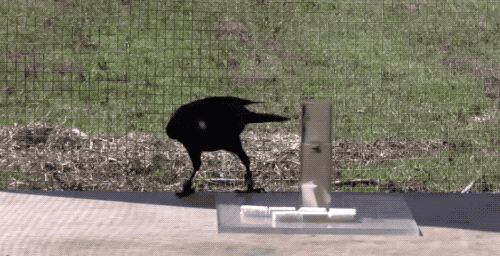Grade Level
3 - 5
minutes
2 hours
subject
Life Science
Activity Type:
animal adaptations, engineering and design challenge, animal behavior

Did that crow just figure out how to get food out of that tube? Yeah, it did. What do you notice about what it did before getting the food? Why did it select specific blocks? Based on what you observed, would you call this crow intelligent? Animal behavior researchers use observations of animals in the wild and puzzles like the one above to learn more about the problem-solving skills of a particular species.
In Aesop’s Fable, The Crow and the Pitcher, a thirsty crow uses stones to gain access to water in a pitcher—as they add more stones, the water level rises, and the crow is able to drink. While conducting her PhD study at the University of Auckland, New Zealand, Sarah Jelbert recreated The Crow and the Pitcher fable, showing that New Caledonian crows had the cognitive ability to solve multi-step problems. In this test, you might notice that the crow only uses particular objects. Jelbert’s study, which included six tests, seemed to show that these crows after being given objects with different weights were able to select objects that had a greater effect on the water level!
This resource was created as part of the Science Friday Educator Collaborative. If you are implementing this in the classroom, please check out the Educator’s Guide and folder of supplementals.
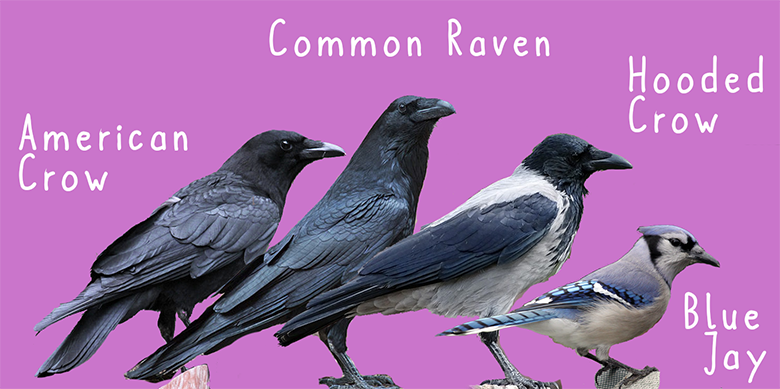
There are approximately 40 different species of corvids—crows and ravens—in the world, a group including even Blue Jays. Studies have shown that some species of crows can recognize human faces, use tools, play games, and even hold funerals. New Caledonian and Hawaiian crows have even been observed to use tools! Crows have proven themselves to be excellent problem-solvers. Some say their intelligence can be comparable to that of a seven-year-old child.
In this activity, you will observe the behavior of an animal and use those observations to design a puzzle that can test its ability to solve a problem. Along the way, we will explore structures of different animals, animal behavior, the role of puzzle boxes in animal behavior research, and think about how problem-solving abilities might help different animals survive and thrive.
Animal Behaviors
No question about it, humans are fascinated by other animals. People can easily spend hours watching animals at zoos and wildlife parks or even people watching (we are animals too). Some of us can spend hours on the internet watching cat videos. Humans are not the only ones—other animals are fascinated with each other, too. Why is it that we are so drawn to other animals? It might be because we are looking at how similar and different they are from us. We wonder, do they think and feel like we do?
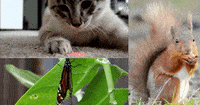
When you watch an insect moving around or pet playing, you are observing animal behavior, how an animal acts in response to their environment (living and nonliving). While these behaviors may seem random (seriously, why do cats chase lasers?), they all serve a purpose to help that animal and their young survive and thrive. You can read about more basics of animal behavior in this resource from Khan Academy.
Let’s take a minute to observe the behavior of crows to get a sense of their behaviors and how complex and intelligent these creatures are.
Observe Wild Crows
As you watch the videos of wild crows, write down your observations and wonderings on your Crow Behavior Worksheet. Be sure you look at both what they do and how they do it. The first video is embedded below. While watching you will notice researchers, but focus on the parts with crows without humans.
Watch the second video, Crows in Nature. Note additional observations on your Crow Behavior Worksheet.
Use your observations of these wild crows to answer the questions below. You can record your answers on your Crow Behavior Worksheet.
- What behaviors did you observe? (What is the crow doing?)
- What did you notice about the bodies of the crows? What structures did you see?
- How did the crows use their bodies? What movements did you notice?
- Why do you think they did that behavior? How does it help them survive?
- Based on what you saw the crows doing in the video, what else do you think they can do?
Observe Learned Behavior In Crows
Humans can influence or alter the behavior of some animals. The examples that follow describe two projects where humans developed systems that train crows to accomplish a specific task. Write down your observations of each system on your Crow Behavior Worksheet.
Example One: In 2018, a Dutch startup called CROWded Cities invented the ‘Crowbar’, a device that releases a treat every time a crow deposits a cigarette butt into it. Using a reward system, they trained some crows to clean up cigarette butt litter. Check out the design in the image below and watch this video about the Crowbar device.
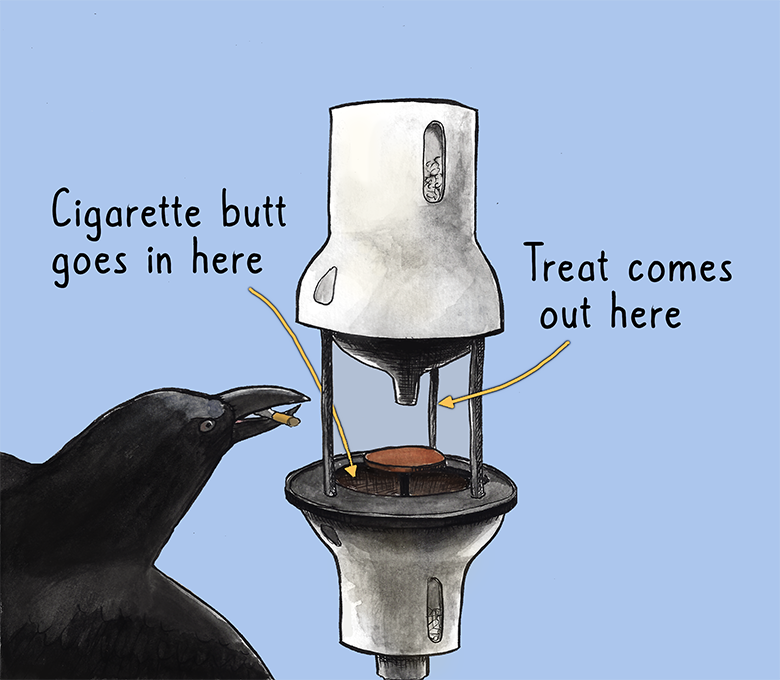
Example Two: In a similar idea, the French theme park Puy du Fou trained rooks, a species in the crow family primarily found in Europe and Asia, to pick up litter left behind by park guests in exchange for food. These rooks were not wild but raised and trained. Check out the video of the rook work at Puy du Fou.
Based on your observations of these two systems think about the questions below, which you can also find on your Crow Behavior Worksheet:
- What behaviors did you observe? (What is the crow doing?)
- How did the crows use their bodies to accomplish these tasks?
- Are humans using innate or learned behavior in crows when they design these systems? A combination?
- What could you do to figure out if your hypothesis is true?
- Based on what the crows learned in these two instances (Crowbar and Puy du Fou), what else do you think they can do?
Activity 1: Animal Observations
Like humans, other animals use a wide variety of behaviors to solve problems. A single animal can perform many different behaviors, sometimes at the same time as one another!
One of the tools that scientists use to keep track of animal behavior is an ethogram, a chart where they tally how often they see an animal performing particular behaviors. For example, if you were studying grooming behavior, you may observe how many times an animal grooms another animal in an allotted time period.
You are going to use a similar system. You will be observing and recording a variety of animal behaviors using live wildlife webcams. The more time you spend making observations, the better! You will choose three behaviors and then observe for a period of ten minutes. The type of animal behavior observations you make will be dependent on the animals themselves, you can find a general reference on page three of the Animal Observation Chart.
NOTE: It may take more than one observation session for your animal to cooperate (for example, if they are sleeping during your entire observation period!)
- Choose an animal to observe. You may have to check multiple webcam feeds before making your decision. Our favorite webcams are linked in the slide above.
- Write its common name and species (if known) on your Animal Observation Chart.
- Brainstorm the types of behaviors you expect to see, and discuss with a partner if you able. Think about what behaviors might be related to staying healthy, caring for young, staying safe, and practicing for the future. There is a list on page three of your chart for reference.
- Choose three behaviors and write them at the top of each of the three columns on your Animal Observation Chart.
- Record the number of times you observe each behavior using tally marks in each time block. (See examples below.)
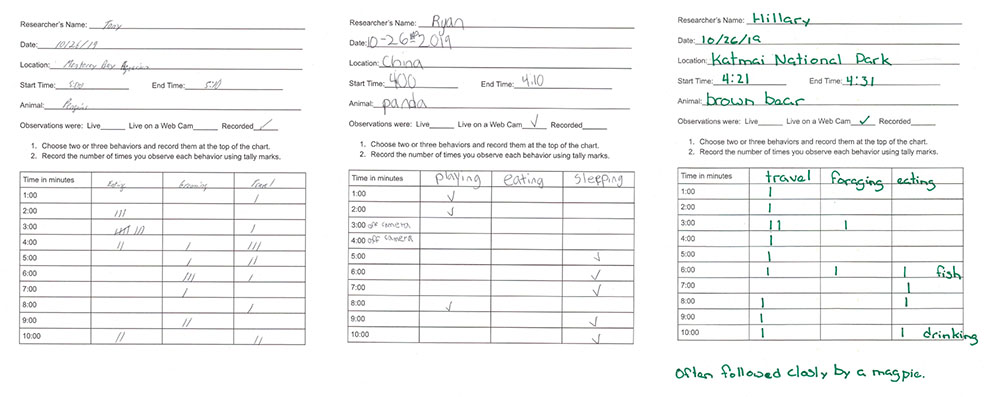
After your webcam observations, head outside! By observing animals in their natural habitat, you may see different behaviors than those seen in captive animals. There is a lot we can learn from the animals in our neighborhoods and even in our own backyards. Be sure to follow these guidelines for maintaining space for nature to thrive.
"Crows, A Bird That’s Not Bird-Brained"
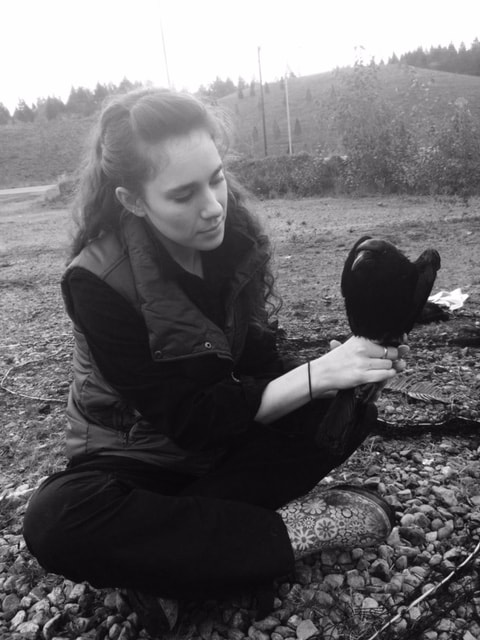
Species in the crow family—Corvidae—are considered highly intelligent animals. What are the behaviors of crows that led to this conclusion?
Kaeli Swift is a corvid researcher at the University of Washington, and her work has shown that American crows play games, hold funerals, and even recognize human faces. We are going to listen to some selections from her Science Friday interview and excerpts from an AMA she did with Science Friday on Reddit.
While listening to and reading, write down any interesting facts you learned or new questions you have about the behavior of birds in the crow family.
If you can, do this activity with other people using sticky notes so that you can collect more ideas.
- Kaeli Swift also participated in an AMA (Ask Me Anything) discussion on Reddit.com with Science Friday staff on corvids. Read some of her responses to questions in Questions About Crows? We’ve Got You Covered.
Click here for transcripts for the audio clips.
Now, group your sticky notes into themes. If you are working with other people, look at the ideas they generated. Did they find the same things interesting? Did they ask similar questions to yours? Share an idea that they didn’t have on their list.
Intelligence can be defined in many ways. You might have noticed that when Swift says crows are “intelligent,” she is referring specifically to the ability to solve certain problems with a variety of approaches. This comes from observing their behavior in the wild and in controlled settings. By designing puzzles for crows to solve, researchers can pinpoint and test the problem-solving abilities of these amazing animals.
Questions About Crows? We’ve Got You Covered
Activity 2: The Games People Play
So, who could solve a puzzle faster, you or a crow? Well, that all depends on the puzzle. We use problem-solving skills constantly—to cross the street, eat a meal, or when having fun. Let’s try some puzzles designed specifically for humans. Logic puzzles are designed to be fun, but some of the puzzles will be more difficult than others to solve.
Spend a maximum of five minutes on each puzzle in the slides below. You can always go back later if you need more time.
After your puzzle time, answer the following questions on your Games People Play Sheet:
- What skills or abilities were required for each puzzle?
- How might those skills or abilities help us survive?
- Why would an animal (other than a human) have a hard time solving these puzzles?
- Some animals appear to play games. What animals have you observed playing? What were they doing? How could this behavior benefit the animal?
- Could you directly compare a human and another animal solving the same puzzle? How would you “score” them on the same puzzle?
Animals use their instincts and even learn new behaviors while engaging in play. Animal observations can tell you a lot, but often researchers use puzzles to help them understand the behaviors and instincts of the animals they are studying. Researchers may have animals work through a series of problems to gain access to food or to train them for other tasks, for example, search and rescue dogs.
When designing a puzzle, researchers consider both the physical and cognitive limitations of the organism they are researching. Thinking back to the videos and observations you made of corvids and other animals, how could their anatomy be compared to human anatomy? Can direct comparisons be made between similar anatomical features, such as wings and arms? How do humans and other animals use similar anatomical features in different and/or similar ways?
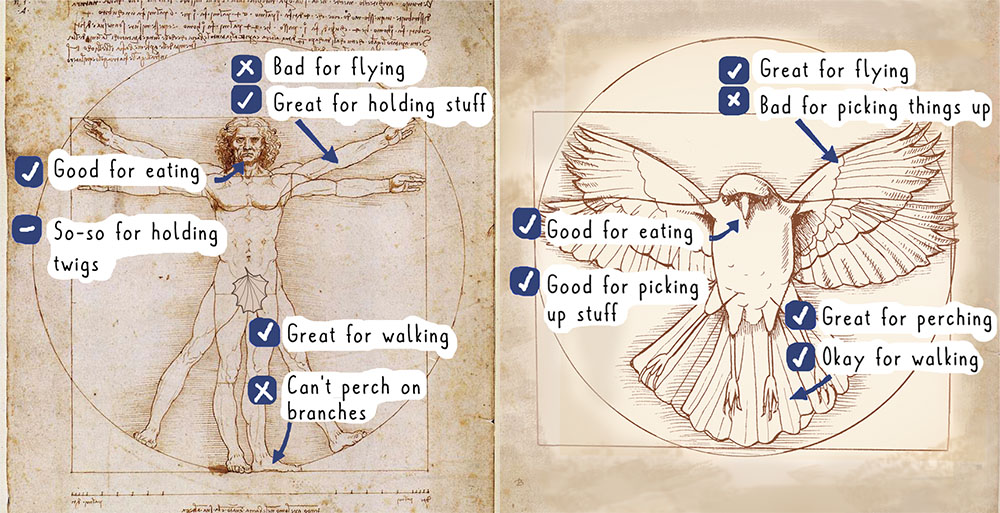
Thinking about our crow observations…
- What do you think it would look like if a crow were too frustrated to continue a puzzle?
- What types of incentives would encourage them to try a puzzle?
- What senses, skills, or body parts did you rely on to solve these puzzles? Does a crow have the same body parts?
- How would you need to modify one of the puzzles you tried to be relevant and achievable by a crow?
Activity 3: Design A Challenge
You already challenged yourself by attempting and a series of logic puzzles designed for humans; now, you will design a challenge (or puzzle) for an animal you’ve observed.
Engineering Design Process
To complete your animal challenge, you will engage in the engineering design process—a series of activities that engineers, researchers, designers, and many others use to solve a problem. Your problem: design a challenge for an animal that will help you learn more about its problem-solving abilities. Design a challenge for them to solve to gain access to a food treat. Here’s the process:
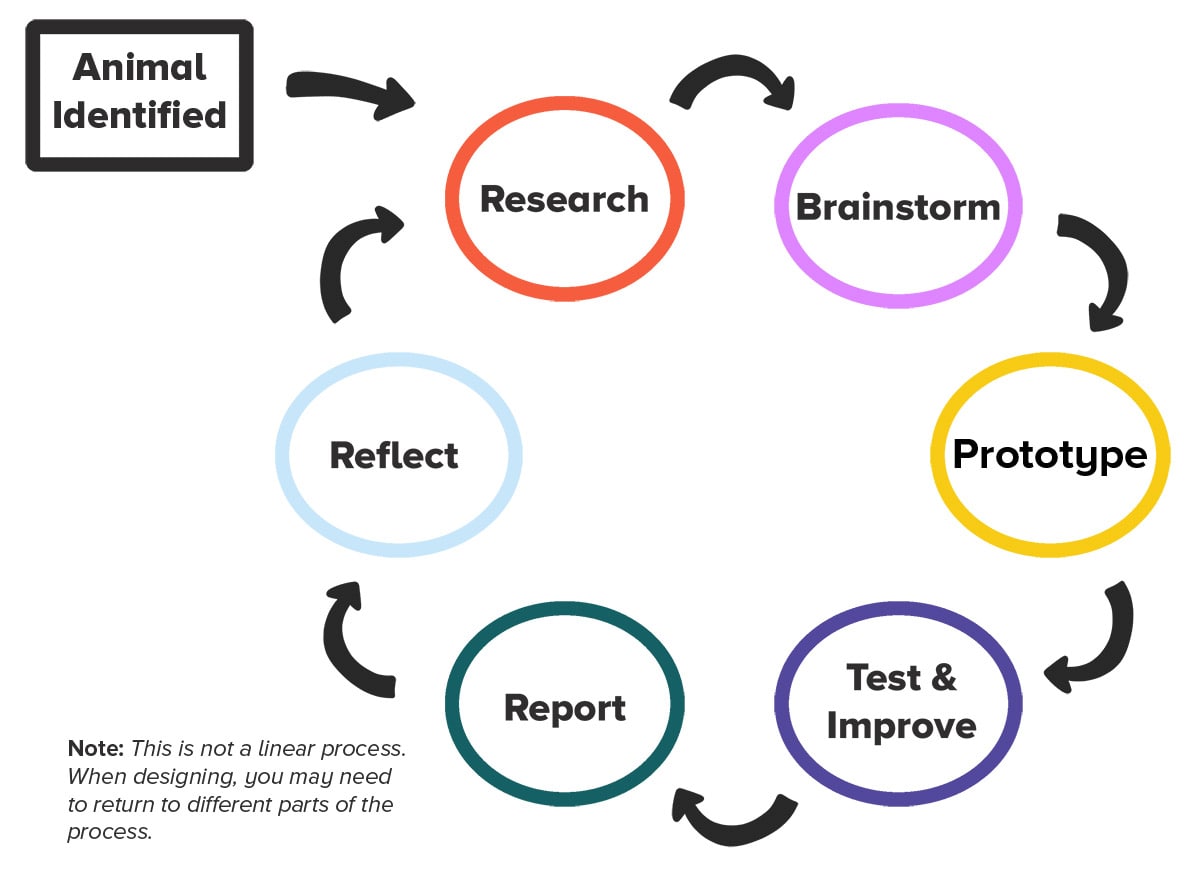
Your animal challenge design must do the following:
- Focus on one animal.
- Identify particular behaviors that inspired the design.
- Test an animal’s ability to reason/think/problem-solve/have fun.
Choose An Animal
What animal do you want to create your challenge for? Consider using one of the animals you observed during this activity, but feel free to shift to another animal you’ve observed, maybe a local animal? Crows? Pigeons? Squirrels? Coyote?
Once you’ve selected, write down your choice on your Animal Challenge Design Workbook.
Research Your Animal
Whether you are looking at an animal you observed already or have selected a new one, we still need more information before we can design our puzzles. Engineers gather research to help them create their solutions to problems, and in your case, you need information that will help you design a challenge for an animal that will help you learn more about its problem-solving abilities. Remember that researchers consider both the physical and cognitive limitations of the organism they are researching.
As you gather research, add them to the ‘Research’ section of your Animal Challenge Design Workbook.
Guiding Questions
- What natural behaviors are observed in the animal you chose? (You can use your observation notes here, but also research what other scientists have observed in your animal.)
- Not all animals have hands, so your challenge must be solvable using your animal’s available structures. What is the body of your organisms like? How does it move? Grab objects?
- Describe the niche of your animal. Where does it live? How does it interact with the living and non-living things in its surroundings? What food do they love to eat?
- Do they display problem-solving skills? If so, describe how they go about solving a problem.
Another key aspect of research is looking into challenge designs of other researchers for inspiration. Watch the following videos of animals solving challenges to help inspire your own design.
For each video, answer the following questions in your Animal Challenge Design Workbook:
- What is the animal doing?
- Are the behaviors you saw play behaviors?
- What function do the behaviors serve?
- Could this behavior help the animal survive? Why or why not?
Brainstorm & Sketch Your Design
Before you dive into drawing and creating, we should start by identifying your criteria—define what would make your puzzle box successful—and your constraints—limitations you must consider. Be sure to think about the physical and cognitive abilities of your organism when outlining your criteria and constraints in your Animal Challenge Design Workbook.
Use your research on your animal, defined criteria and constraints, and your available materials to generate possible designs for challenges.
- What ability did you want to test?
- What are some initial ideas for features of your challenge? Give yourself time to write down all the ideas you have, then read your list and chose 1-2 you want to try.
- Which of the animal’s behaviors do you think might help them solve the challenge?
- Can your animal grip something? If not, be sure to think about how the puzzle will be held steady so that it does not move around or tip over.
- Do you need to provide tools (such as sticks or stones) for the animal to use to solve the challenge? Will they be able to use those tools?
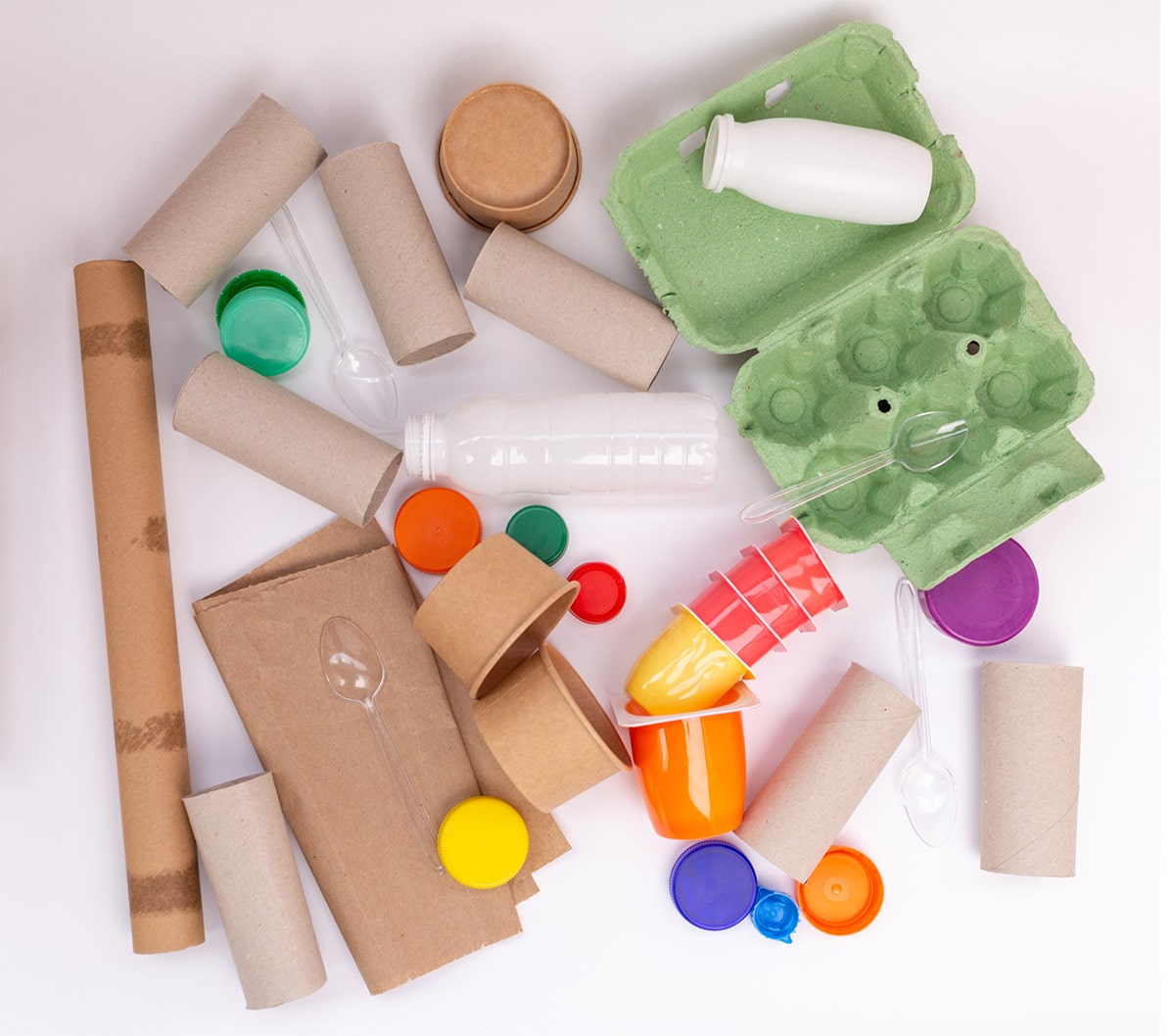
Think about and gather available materials. What materials could you use to complete your design? Are there materials that you can reuse/upcycle in your design? These are prototypes, so our goal is not a perfect and durable animal challenge, but rather something that allows us to test whether your design would work for the organism you selected.
Remember, if you don’t have access to materials you can always create a schematic—a drawing with detailed materials and dimensions that someone could use to create your design—or use a free design program like Tinkercad to create your design.
- What materials will work best in your design?
- Create a labeled design sketch that includes information about potential materials, size, and moving parts of the challenge.
Activity 4: Create Your Animal Challenge Prototype And Test It Out
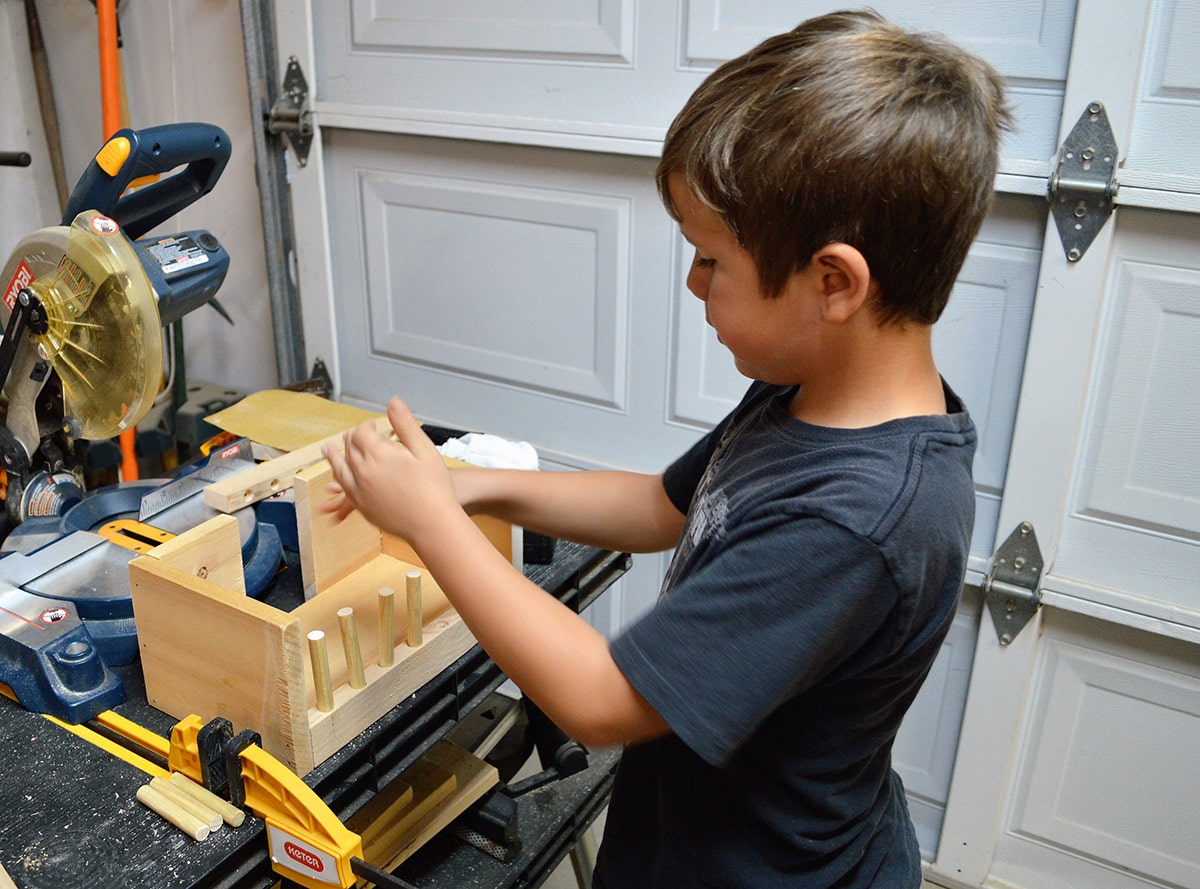
Create A Working Prototype
Now it’s time to get building. Working alone or with others, create a working prototype of your animal challenge for testing (by another human) with your criteria and animal research in mind. Your prototype does not have to be perfect; that’s part of the process. Prototypes are meant to help us decide if our design can fulfill the criteria. You can develop better and better prototypes over time, and level up the materials you use.
Note: If you are working with potentially dangerous materials (e.g., wood, nails, cutting tools) remember to have an adult present to help you and to wear protective gear (e.g., safety glasses, gloves) when needed.
While you are building your prototype, be sure to keep track of challenges and alterations in your Animal Challenge Design Workbook.
If working in a group, it is important that everyone in the group works on the build. Before beginning, decide what role each team member will play and what portion they will help build. Remember that during the building process, we should help and support each other. Everyone shares responsibility for safety. Behave in a way that protects everyone’s safety and your own.
Preparing For Testing
Congratulations, you have finished building a prototype of your animal challenge! You will not be testing your prototypes on actual animals, for your safety and theirs. Instead, you will be testing them on another person!
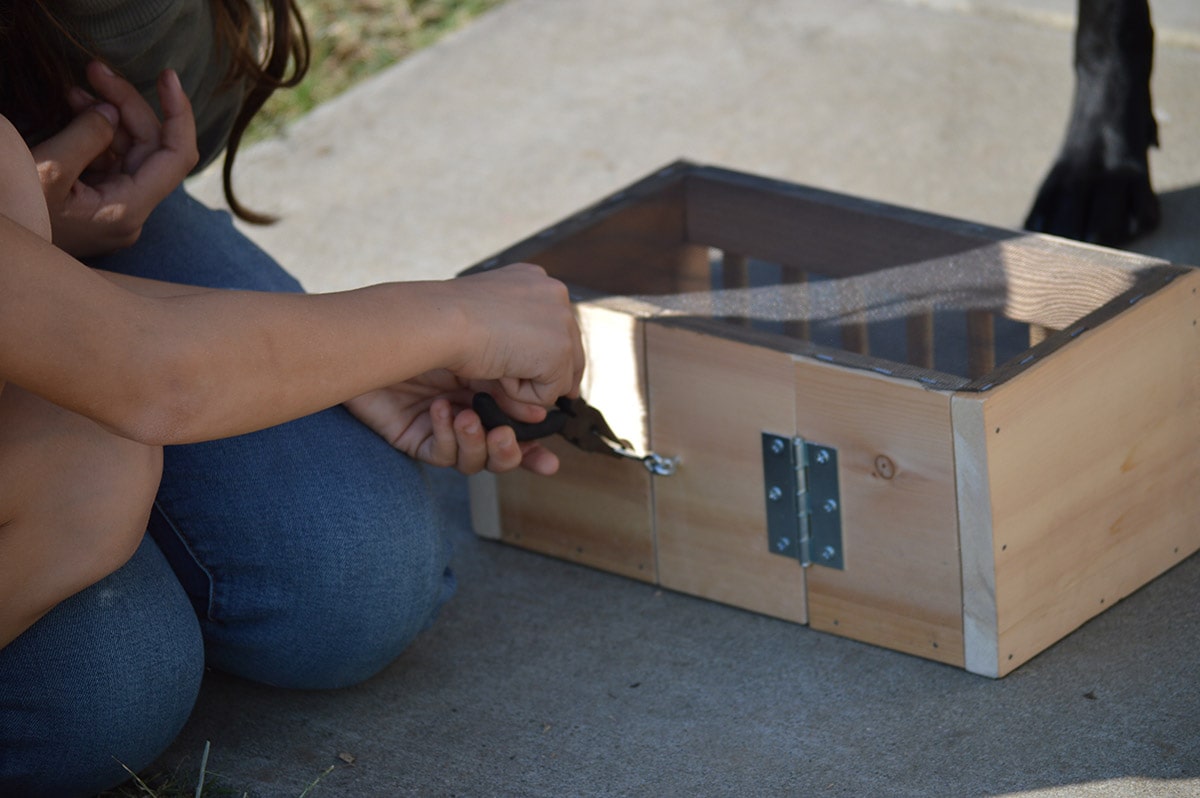
Before another person tests your puzzle, you need to give them some information. You can add this to your Animal Challenge Design Workbook.
- Write a short statement in which you say what animal the puzzle was designed for and what you were intending to test. For example, in the photos above, the box was designed to test a corvid bird’s ability to [insert a problem-solving behavior] in order to open the box to retrieve a food treat inside.
- Provide a picture of key structures of your chosen animal, pointing out how the tester might need to modify how they engage with the puzzle.
- Describe any special considerations you had to make while designing the box. The test pictured above was designed to become more difficult each time the corvid gained access to the treat.
Testing Designs
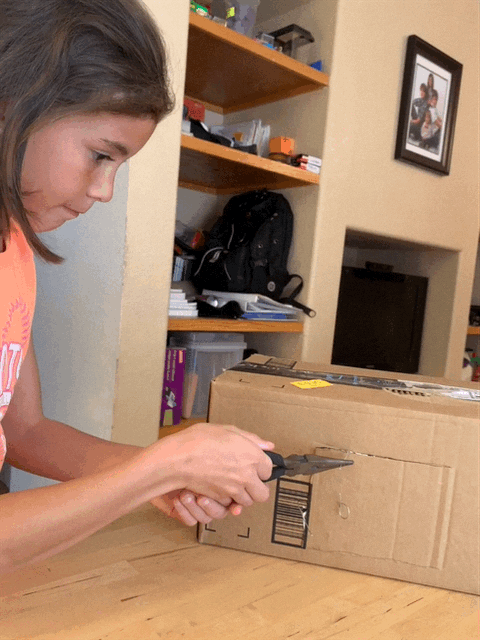
- Give your tester time to read your short statement about the challenge and your organism.
- Tell them they will have five minutes to engage with the challenge.
- Describe any adaptations or tools you will have them use to engage with the puzzle. For example, you might provide pliers or tweezers to help them mimic a beak, or a hand rake to mimic long claws.
- Tell them that they cannot use their hands except to hold any tools you are using to mimic the structures of the animal you are imitating.
- Answer any questions they might have about engaging with the puzzle.
- As someone tries to solve your challenge, keep notes about their successes and failures in the ‘Test And Improve’ section of your Animal Challenge Design Workbook.
- Conduct a brief debrief about their experience solving your challenge. You can use some of the reflection questions below.
Reflection Questions
- Did the puzzle move when they tried to solve it?
- Tester: Would the intended animal be able to detect the treat inside to motivate it to do the puzzle?
- Tester: Was it too easy to be a good measure of intelligence?
- Tester: What did you have to figure out in order to solve the puzzle?
- Tester: What types of logical reasoning would an animal need in order to solve it?
How Might Problem-Solving Abilities Help An Animal Survive?
Use what you have learned about animals and their problem-solving abilities to answer one of the following questions:
- Crows are very intelligent animals. Write about different ways crows demonstrate their intelligence.
- Could we use the ability of animals to learn, and in some cases solve problems, to help conserve them? For example, sometimes animals face new, unfamiliar predators and they have no instinctual defenses. How might learning be important to these animals?
Want to explore more about corvids or animal cognition? Check out some of these resources!
Are We Smart Enough to Understand How Smart Animals Are?
Next Generation Science Standards
This resource works toward the following performance expectations:
- 4-LS1-1: Construct an argument that plants and animals have internal and external structures that function to support survival, growth, behavior, and reproduction.
- 3-LS4-3: Construct an argument with evidence that in a particular habitat some organisms can survive well, some survive less well, and some cannot survive at all.
- 3-5-ETS1-1: Define a simple design problem reflecting a need or a want that includes specified criteria for success and constraints on materials, time, or cost.
- 3-5-ETS1-2: Generate and compare multiple possible solutions to a problem based on how well each is likely to meet the criteria and constraints of the problem.
- 3-5-ETS1-3: Plan and carry out fair tests in which variables are controlled and failure points are considered to identify aspects of a model or prototype that can be improved.
Credits:
Written by Hillary Gutierrez
Edits by Shirley Campbell and Xochitl Garcia
Review by: Laura Diaz, Jessica Metz, Chenille Williams, Jennifer Powers, Katie Brown, Stacey George, Marta Toran, and Michael Kosko
Digital Production by Xochitl Garcia
Meet the Writer
About Hillary Gutierrez
@HDGutrrzHillary Gutierrez teaches elementary science in Dixon, Calif., where she loves getting messy in the classroom. She believes hands-on learning activities are key to the educational experience. Hillary has a bachelor’s in anthropology from the University of California, Davis, a master’s in STEAM Education from the University of San Diego, and various teaching certificates in geology and special education.
